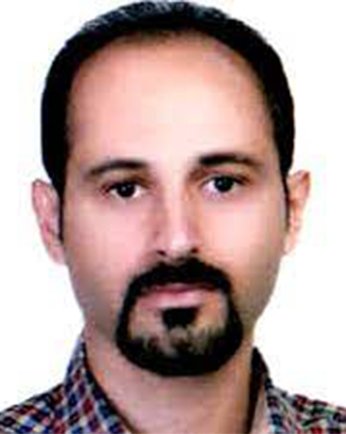Session Abstracts:

Graduate Student Researcher
University of Southern California
A Causal Perspective on Basin Effects
Co-Authors: Chukwuebuka Nweke (University of Southern California), Chenhao Wu (UCLA), and Henry Burton (UCLA)
Abstract: Recent seismic events have underscored the strong influence of basin effects on ground motion amplification. The 2011 Christchurch earthquake (Mw 6.2) in New Zealand saw peak ground accelerations in central Christchurch reach 1.9g vertically and 0.63g horizontally, far exceeding design levels (Bradley and Cubrinovski, 2011). Similarly, the 2015 Gorkha earthquake (Mw 7.8) in Nepal produced significant basin amplification in Kathmandu (Asimaki et al., 2017). These events highlight the urgent need for improved understanding and quantification of basin effects in seismic hazard and risk assessment.
Current approaches to quantifying basin effects rely on ergodic procedures and statistical methods that struggle to disentangle the complex relationships among multiple, often correlated, geomorphological variables. The 2018 update to the USGS National Seismic Hazard Model incorporated these effects, revealing ground shaking increases of up to 50% in areas overlying deep sedimentary basins.
To address these challenges, we propose an approach based on causal inference to isolate and quantify the effects of multiple geomorphological features on ground shaking. This method goes beyond traditional statistical correlations to explore cause-and-effect relationships between basin characteristics and seismic response. By applying principles of causal inference, we aim to elucidate how specific basin features, both individually and collectively, influence ground shaking intensity, duration, and subsequent structural response.
Our approach represents a potential paradigm shift in analysing earthquake data, offering a more nuanced understanding of basin effects that can inform seismic hazard assessments and structural design practices.
References:
1.Bradley, B.A. and Cubrinovski, M. (2011). "Near-source Strong Ground Motions Observed in the 22 February 2011 Christchurch Earthquake." Seismological Research Letters, 82(6), 853-865.
2.Asimaki, D., Mohammadi, K., Mason, H. B., Adams, R. K., Rajaure, S., & Khadka, D. (2017). Observations and simulations of basin effects in the Kathmandu Valley during the 2015 Gorkha, Nepal, earthquake sequence. Earthquake Spectra, 33(1_suppl), 35-53.

Graduate Student Researcher
UCLA
Performing probabilistic liquefaction hazard analysis inside the hazard integral, including impacts of sea level rise
Co-Authors: Scott J. Brandenberg (UCLA), Margit Maple (UCLA), and Timu Gallien (UCLA)
Abstract: Traditional codes for performing probabilistic liquefaction hazard analysis (PLHA) usually rely on a hazard curve developed from a probabilistic seismic hazard analysis (PSHA). Drawbacks of this method are it only accounts for the influence of magnitude on liquefaction as it uses a small number of magnitudes and selection of the magnitudes requires judgment. Here, we present an integrated hazard calculation approach where liquefaction uncertainty is accounted for within the hazard integral to perform PLHA for every event within the PSHA.We adopt the UCERF3 source model, which uses over a million events. For each event, ground motion at the site is a random variable that is used to compute cyclic stress ratio (CSR). Cyclic resistance ratio (CRR) is also a random variable obtained from a liquefaction triggering model. Because CSR and CRR are log normally distributed, we can use a closed-form solution to obtain a distribution for factor of safety (FoS). The rate of the event is then multiplied by the cumulative distribution function (CDF) of FoS and the rate-weighted CDF’s are summed over all events to compute the liquefaction hazard curve. Using efficient vectorized operations, the PLHA runs within seconds for a single site despite the large number of calculations. Streamlining the code required developing computationally efficient data storage structures for the UCERF3 model, and a vectorized source-to-site distance calculation. The code is used to compute the PLHA at Cardiff State Beach in Southern California for current groundwater conditions and for a 1-meter sea level rise scenario.

Graduate Student Researcher
University of Memphis
Multivariate Adaptive Regression Splines Model Predictions for Seismic-Induced Landslide Displacements: A Comparative Study of two input datasets
Co-Authors: David Arellano (The University of Memphis), Dr. Rouzbeh Nazari (The University of Memphis), and Mohammad Reza Nikoo
(Sultan Qaboos University)
Abstract: The design and risk analysis of numerous infrastructures near slopes, particularly in seismically active regions, require the estimation of seismic-induced slope displacement as a critical engineering demand parameter. Most models in the literature estimate these displacements as a function of ground motion intensity measures such as peak ground acceleration (PGA). These models are based on the Newmark approach which simplifies the slope as infinite. However, this assumption is not realistic, as it neglects the occurrence of other failure mechanisms, such as rotational failure, which are prevalent in certain soil slopes. Recently, with the availability of modern computational resources like supercomputers at the Texas Advanced Computing Center (TACC), simulation-based models have gained interest as complex analyses have become more computationally feasible. Consequently, many researchers have employed finite element, finite difference, and other numerical modeling methods to develop predictive models through applying different regression techniques. In this study, the Multivariate Adaptive Regression Splines (MARS) model is used to derive empirical equations from two datasets: one from the DesignSafe data repository based on finite element simulations, and the other, obtained through personal communications, based on finite difference modeling. Because the two datasets originate from different numerical analysis methods—one capturing prefailure shear deformation and the other not— the resulting equations differ in terms of the predictor variables included and their corresponding residual variabilities. Additionally, most influential parameters are identified through computing relative importance indices of predictors for both datasets, which is one of the key advantages of using MARS.

Assistant Professor
University of Michigan
Recent Developments in Hazard Modeling from a Particulate Perspective
Co-Authors: Ann Jeffers (University of Michigan), Curtis Baden (USGS), Yumeng Zhao (University of Michigan), Fan Yi (Tianjin University), and Debadrita Das (University of Michigan)
Abstract: Many hazards that adversely impact civil infrastructure can be modeled by considering them as a particulate system. Particulate and granular systems include the soils through which shear rupture propagates during earthquake surface fault rupture. They constitute the grains ranging from fine silts to boulders involved in rock avalanches and debris flows. Even wildfires can be viewed from a particulate perspective when the firebrands are modeled as particles carried by winds and impinging on structures at the wildland-urban interface. The commonality to all of these hazards is that the media associated with them composes fundamentally discontinuous materials. This presentation discusses the applications of particle models to these hazards using high-performance computational resources provided through the DesignSafe Cyber Infrastructure. The results of physics-based simulations are described and discussed in the context of what insight they provide for hazard mitigation. In the context of earthquake surface fault rupture hazard mitigation, recent simulation results are compared against observations of surface fault rupture outcrop locations being heavily influenced by the presence of weaknesses at the ground surface. Possible mitigation approaches are discussed where the first line of defense, i.e., avoidance, is not practical or not possible. In the context of rock avalanches, simulation results are presented with a focus on the largest grains, e.g., the boulders, that behave as a granular flow characterized by inter-particle collisions. Additional applications of computational fluid dynamics in simulating debris flows and wind-driven flow of wildfire embers are described.

Assistant Professor
Missouri University of Science and Technology
A Framework for Forecasting and Runout Estimation of Regional Co-Seismic Landslides
Co-Authors: Boneng Chen (Missouri University of Science and Technology)
Abstract: Landslides triggered by earthquakes, known as co-seismic landslides, pose significant risks to infrastructure and communities, often leading to extensive damage and substantial loss of property and life. Forecasting these landslides and estimating their runout distances are essential for assessing their potential impact. However, current forecasting methods are limited; while they can identify landslide-prone areas, they often fail to provide detailed information about individual landslides, such as area and volume, which are crucial for runout distance estimation. The RESTAB-prediction algorithm addresses these limitations by utilizing seismic displacement models to identify landslide triggering locations and applying geomorphic characteristics and a geometric rule to generate three-dimensional failure surfaces. This process produces a detailed landslide inventory, with each landslide represented by a polygon from which essential parameters such as landslide height, volume, and area can be derived. Runout distances are estimated using empirical relationships developed from datasets of co-seismic landslide runout distances, incorporating key parameters such as height and volume. By integrating RESTAB-prediction with these empirical models, a framework is established that generates a co-seismic landslide inventory with runout distance estimates for each landslide. This framework enables the quantification of failure risks to infrastructure and communities by comparing predicted runout distances with the proximity of at-risk infrastructure or communities. Ultimately, this approach provides valuable guidance for mitigating landslide hazards and enhancing societal resilience, with potential future applications in regional earthquake hazard preparedness.

Postdoctoral Fellow
University of Canterbury
Validation of hybrid broadband ground-motion simulation for large-magnitude earthquakes in New Zealand
Abstract: Due to the paucity of large-magnitude earthquakes, estimating their expected intensities solely from observed ground motions is challenging. Hybrid broadband ground-motion simulations (hereafter GM-Simulations) offer an alternative by explicitly modelling the physics of kinematic rupture and wave propagation from the source to the site. However, thorough validation of GM-Simulations is pivotal for their application in engineering practice. This article presents key findings from a comprehensive validation of GM-Simulations for predicting ground motions from large-magnitude earthquakes in New Zealand. The analysis utilizes a database of 214 recordings from 11 events (up to Mw 7.8) recorded at 174 stations across the country. It compares the impact of different source representations, ranging from single-plane finite faults to multi-segment models, on the performance of simulations. These results are benchmarked against both observational data and empirical ground motion models to evaluate the accuracy of GM-Simulations.

Graduate Student Researcher
University of California, Davis
Application of Machine Learning Algorithms in Calibrating Plasticity Models for Liquefiable Geosystems
Co-Authors: Laura Luna (UC Davis) and Katerina Ziotopoulou (UC Davis)
Abstract: Advanced Nonlinear Deformation Analyses (NDAs) are commonly used to assess the seismic performance of geosystems involving liquefiable soils. Such analyses require proper calibration of constitutive models to reasonably describe the soil response across the loading paths relevant to the problem at hand. PM4Sand is a constitutive model for sands in earthquake engineering applications. The model has a total of 24 parameters: three are primary (user-assigned or -calibrated), while the rest are secondary and default to a generalized calibration that reasonably matches commonly targeted behaviors. The primary parameters are the apparent relative density (D_R), shear modulus coefficient (G_o), and contraction rate parameter (h_po) used to calibrate cyclic strength. While D_R and G_o can be calculated on the basis of in-situ data, h_po should be afterwards calibrated for the combination of D_R and G_o to match the desired cyclic strength of the soil at a specific number of loading cycles. For field applications, the increased number of possible D_R, G_o, and cyclic strength combinations would benefit from a more robust and efficient procedure for constitutive model calibration. This study explores the application of Machine Learning (ML) algorithms to facilitate the calibration of h_po using an extensive training database including numerous combinations of D_R, G_o, and cyclic strengths. In addition to primary parameters, the ML model incorporates selected secondary parameters to broaden its applicability. The performance of the ML model is validated against published PM4Sand simulation results available in the DesignSafe portal, and all the scripts will be provided on the DesignSafe JupyterHub.
Graduate Student Researcher
Georgia Institute of Technology
On the potential of physics informed neural networks for geotechnical earthquake engineering
Co-Authors: Jorge Macedo (Georgia Tech)
Abstract: Physics-informed neural networks (PINNs) combine physical principles with data-driven methods to solve differential equations. Despite the growing use of machine and deep learning in geotechnical earthquake engineering, the application of PINNs remains limited. This presentation will showcase work conducted at the Georgia Institute of Technology to assess the PINN potential for geotechnical earthquake engineering applications.